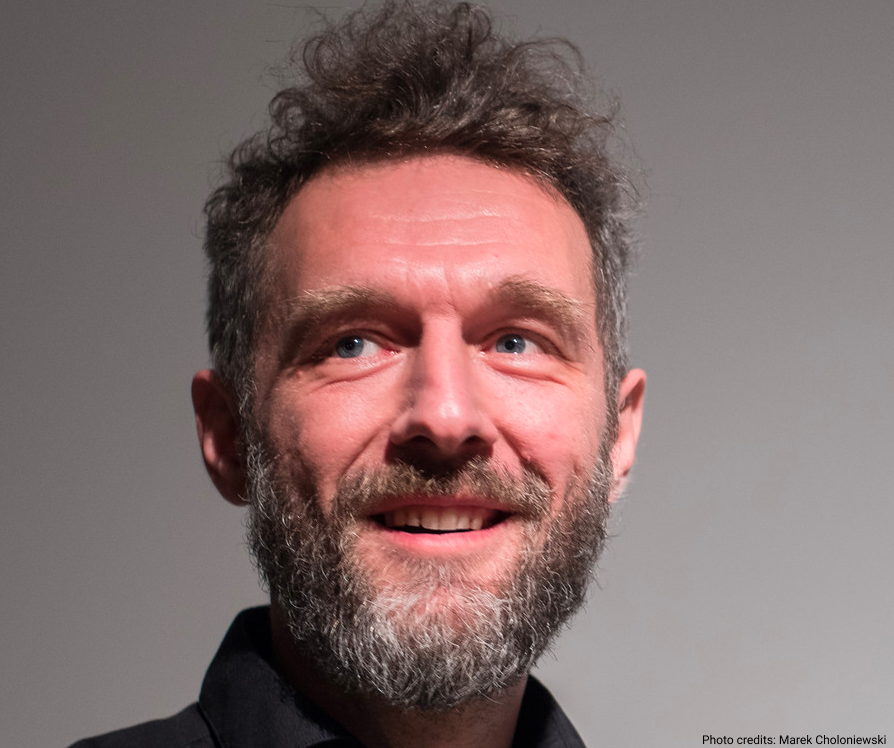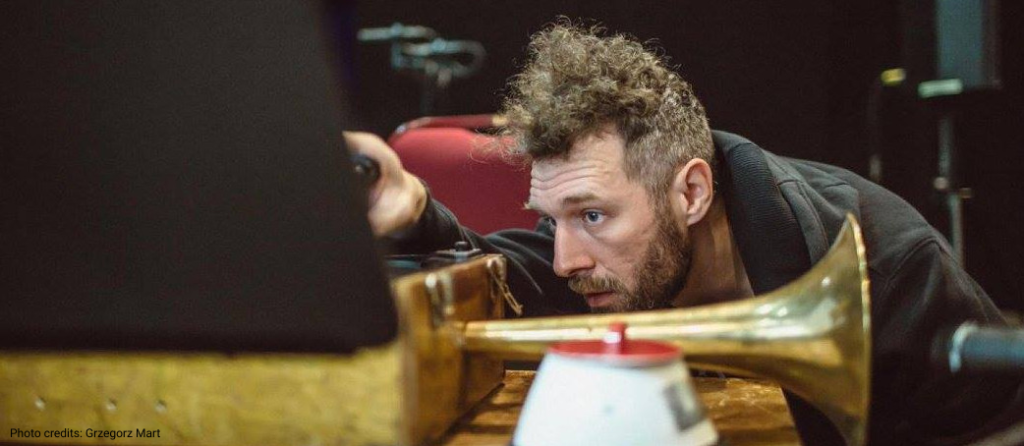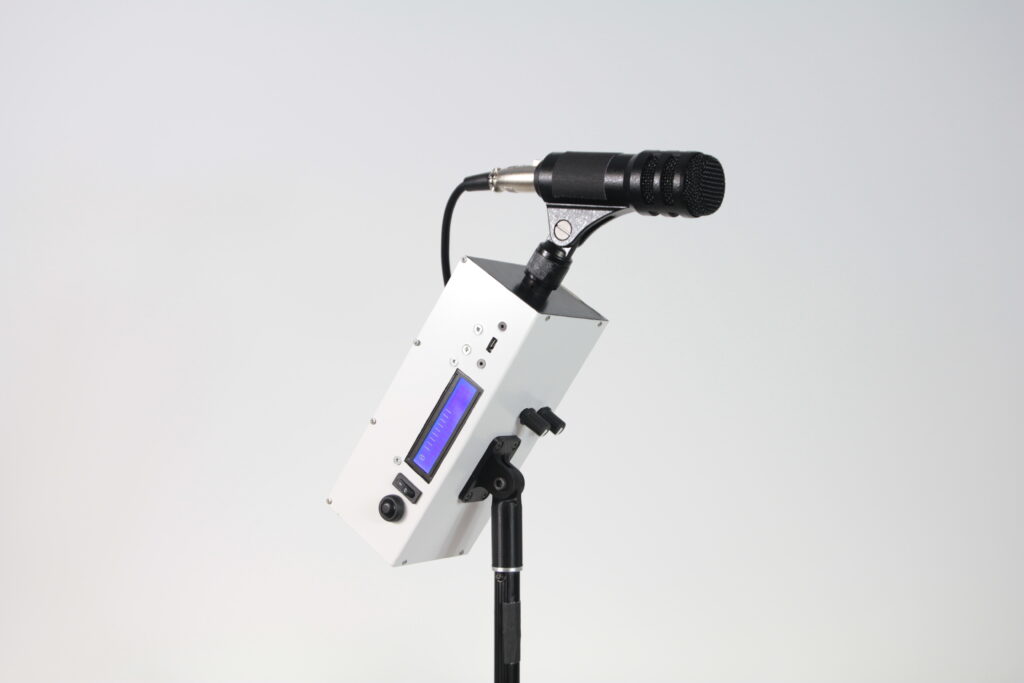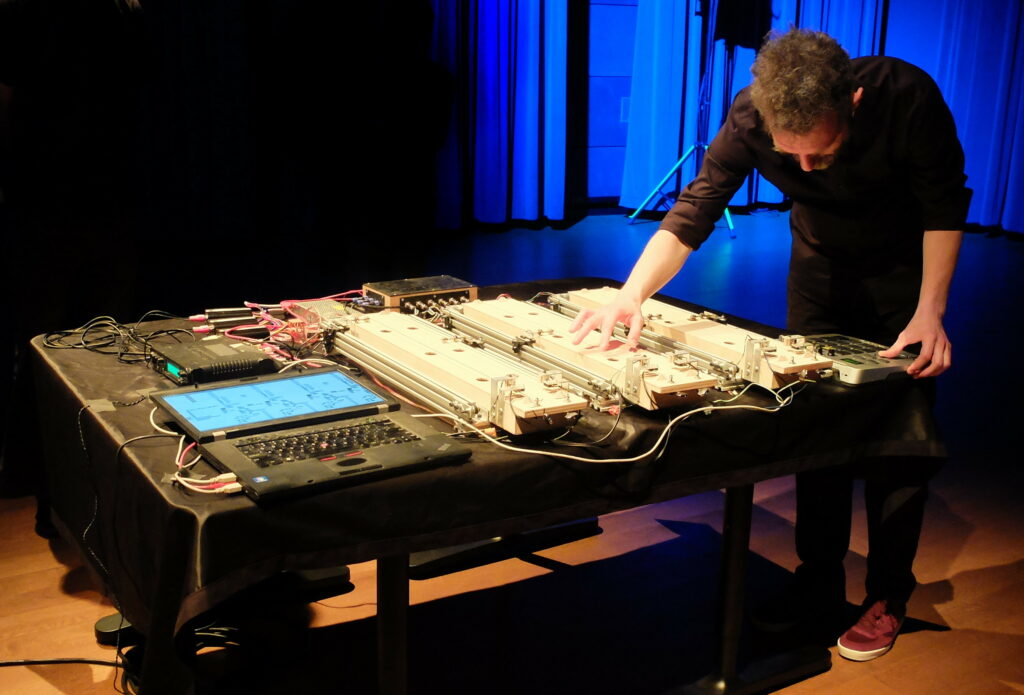There is music all around us – in the streets we walk, in the way we breathe and talk. However, not so often we consider these sounds as music. They have become a natural part of our everyday life. Polish artist Krzysztof Cybulski noticed this connection and therefore created a standalone solar-powered sound harvesting device Autosampler which captures the sounds around us and turns them into music samples. Today we invite you to read a short interview with Krzysztof Cybulski where we discuss his creative path, projects, and many more.

Take a look at Autosampler introduction video:
AUTOSAMPLER from Krzysztof Cybulski on Vimeo.
Tell us more about the time when music came into your life. How did this relationship start, progress, and where is it at the moment?
The music has always been there – one of my first memories is from when I was 4 years old and wanted a guitar for Christmas. I was an autodidact for most of my life, but I also got a degree in music at a certain point, and currently I’m working on a PhD thesis in music technology.
My interests in electronics, mechanics, woodworking and all the DIY/maker stuff has always been present in my life too, so it was a matter of time for me to gradually find a way to combine these interests and it eventually took the shape of my current activity.

You have a very artistic approach to everything you do. How and why did you decide to combine DIY electronics with art?
It always seemed natural for me – being deeply fascinated by both music, art, craftsmanship, mechanics, electronics and programming, I’ve always leaned towards combining all these seemingly disparate areas into a coherent creative practice. It took me a long time, but eventually I’ve found my own ways of making it happen. Of course the quest isn’t fulfilled yet – I’m still experimenting and looking for ways to make the most harmonious combination.

Could you please introduce us to Autosampler? What are its main functions and unique features? How and why did you decide to create this project?
Autosampler is an idea that I’ve had in mind for quite some time – the main idea is that sounds of a certain musical pitch would trigger a digital recorder, and that every pitch would have its own slot in the library of recorded sounds. I’ve experimented with this idea – first by patching a simple version in Reaktor, then in Pure Data, but I thought it would really make sense only if I could have a portable, battery operated device that I could place in any possible space, e.g. to look for musical sounds within the noisy environment of a busy street or kids playground. The device was ideally supposed to be small, unsuspicious, so a laptop with external soundcard and a microphone on a stand wouldn’t do. With that in mind, the project had to wait until this sort of embedded computers, represented by Pisound, became available.
Eventually I’ve decided that Autosampler should have a visible microphone – it is as much a transparent, utilitarian device as a sound art object of sorts, so its functions should be self-explanatory. A microphone is an instantly recognisable object, thus it explains a lot about the Autosampler on a first sight – well, at least most observers would realise that it has something to do with sound capturing. 😉
Why did you choose Raspberry Pi and Pisound over other devices for Autosampler? What do you like about them the most?
When it comes to standalone devices/embedded platforms which can run Pd patches, there are of course a couple of alternatives, e.g. Bela, Organelle, the OWL, and probably some others that I’m not aware of. Each of them has its pros and cons. I found that both Pisound and Bela particularly suit my needs. Pisound is definitely a device that can run out of the box, without much fiddling. Physical ins, outs and potentiometers are already there, so in certain situations, where you’re not particularly keen to build a sophisticated enclosure for your device, solder jack sockets etc, it’s just perfect. Also, at the time when I was working on Autosampler, Pisound seemed best at handling the fft modules, such as fiddle~ and sigmund~, which are essential to Autosampler, so this was a deciding factor. Also the idea of having different Pd patches on a couple of usb drives is really neat, so you could build a device without a screen or other display and really think of it as a hardware device which you could operate without the need to dive into menus etc. in order to change the patch.

Could you please share some tips and tricks with those who are new to creating their own electronic devices or would like to start but do not know where to?
I’ve always fiddled a lot with electronics and attempted to build my own devices, mostly by hacking existing stuff (like a tape delay built from a double-deck cassette player). I was also very lucky to be a part of a new-media art group called panGenerator since 2010 – we’re all from different backgrounds, including electronics and robotics on the part of the other guys, so I’ve learned a lot about this stuff along the way.
I would say that a good place to start with digital electronics would be some basic Arduino tutorial (there’s a lot of this stuff online); for more analog stuff I would probably recommend a book by Nicolas Collins – “Handmade Electronic Music”. For Pure Data, which I consider an essential tool for my practice, I’d recommend Youtube tutorials by dr Rafael Hernandez and a great written tutorial at Flossmanuals website.
Eventually, after initial impulse, the best way to learn and gain experience is to work on as many different projects as possible – to experiment, to build prototypes etc.

Do you have any exciting future projects that you would like to share with our readers and us? Please do!
There’s a lot of ideas on my list, but currently I’m mostly concerned with my PhD project, which involves making three new hybrid acoustic-digital instruments, which will communicate with each other via sound and influence the behaviour of improvising musicians playing them.